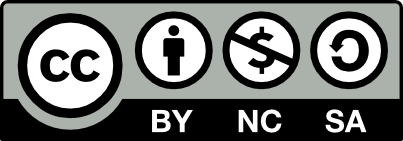Organoids: the future of disease modelling and therapeutics

In the rapidly advancing field of biomedical research, organoid technology has been a groundbreaking development. Organoids – three–dimensional structures derived from stem cells that replicate key structural and functional features of human tissues – have transformed approaches to disease modelling,1 drug discovery,2 and regenerative medicine.3 With the ability to mimic human organs more accurately than traditional cell cultures or animal models, organoids offer tremendous potential for advancing precision medicine and personalised therapies.
Organoids are stem cell–derived microtissues that reproduce the complex architecture and functionality of various human organs, including the brain, liver, kidney, and pancreas. These self–organising structures arise from pluripotent stem cells or adult stem cells, which differentiate into specific cell types and recreate tissue–specific microenvironments. The first major breakthrough in organoid research came with the development of intestinal organoids from leucine–rich repeat–containing G–protein–coupled receptor 5 (Lgr5)–positive stem cells, which provided a model for studying intestinal physiology and disease.4
A significant application of organoid technology is in disease modelling. Organoids derived from patient–specific induced pluripotent stem cells enable the creation of personalised models that mimic the genetic and phenotypic aspects of various diseases, such as skeletal degenerative diseases, cancer, and neurodegenerative disorders.1
Traditional drug development often suffers from poor translatability between animal models and humans, leading to high attrition rates in clinical trials. High–throughput drug screening using organoids has already shown promise in identifying potential treatments for diseases such as cystic fibrosis, where personalised organoid models predicted patient responses to therapies. By generating patient–specific organoids, researchers can study individual disease characteristics and tailor treatments accordingly.
One of the most exciting aspects of organoid technology is its potential in tissue regeneration and repair. Generating patient–specific organoids from adult stem cells enables personalised approaches to tissue repair and regeneration, particularly in bone and cartilage defect treatments. By developing bone organoids from patient stem cells, researchers can optimise explants for effective bone and cartilage repair.
This issue presents a variety of papers covering various fields of organoid research. Li et al.5 review the progress in cardiac organ–chip technology, highlighting its construction methods, including microfluidics and material selection, and its applications in drug development, toxicology testing, and heart disease modelling. Wang et al.6 summarise the development and application of cardiac organoids for modelling cardiovascular diseases, drug testing, and regenerative therapies. Huang et al.7 review advances in spinal cord organoid technology for neural development, highlighting applications in neurodegenerative diseases and injury repair. Zhang et al.8 discuss advancements in skeletal organoid technology, focusing on construction strategies, applications in disease research, drug screening, and regenerative medicine, especially for bone, muscle, and joint tissues. Furthermore, Huang et al.9 focus on the development and application of bone and cartilage organoids for regenerative medicine, particularly in osteoarthritis treatment and tissue engineering.
This issue also features an application of artificial intelligence in the field of organoids. For intense, Yang et al.10 focuses discusses the integration of artificial intelligence with oral organoid technology to enhance diagnostics, treatment planning, and personalised healthcare in oral medicine. Moreover, four commentaries shed light on the innovative uses of organoids in different disease areas. One explores cartilage organoids in regenerative medicine, advancing chondrocyte differentiation through drug screening.11 Another discusses encapsulated liver organoids as a strategy for treating acute liver failure, highlighting immune protection and scalable application.12. A third is using liver organoids to study human liver disease, focusing on the regenerative mechanisms of hepatocytes under pathological conditions.13 Finally, the fourth reveals the long–term development of fetal brain organoids, offering a model for genetic modification and neurodevelopmental disease research.14
However, the use of organoids also presents ethical and technical challenges:
Ethical considerations: One concern is the extent to which organoids can model complex human tissues and organ systems. While organoids recapitulate key features of human organs, they often lack crucial components like vascularisation, immune cells, and full tissue architecture. Co–culturing organoids with endothelial and immune cells is an active area of research aimed at overcoming these limitations. The use of brain organoids has raised ethical questions about their potential to develop consciousness. Although current brain organoids lack the complexity of a fully developed brain, future advancements may necessitate careful ethical oversight to ensure research adheres to moral guidelines.
Advancing regenerative medicine: Researchers are exploring organoid transplantation for tissue and organ repair, developing rapid preparation methods and functional characterisation techniques for clinical applications.
Organoid–on–a–chip: Another promising avenue is organoid–on–a–chip technology, which integrates organoids with microfluidic systems to model inter–organ crosstalk and disease progression. These systems could offer insights into the systemic effects of diseases and drug responses, paving the way for comprehensive therapeutic strategies.
Organoid biobanking: Organoid biobanks, where patient–derived organoids are stored and catalogued, provide an invaluable resource for future research and therapy development. These repositories of disease models will accelerate the discovery of new treatments by making organoid models accessible to researchers worldwide.
In conclusion, organoids represent a paradigm shift in biomedical research. While challenges remain, rapid advances in organoid technology, coupled with interdisciplinary collaborations, are set to propel the field forward. As we stand on the brink of a new era in disease modelling and therapeutics, organoids have the potential to revolutionise our understanding of human biology and transform the landscape of personalised medicine.
1. Clevers, H. Modeling Development and Disease with Organoids. Cell. 2016, 165, 1586-1597.
2. Takahashi, T. Organoids for Drug Discovery and Personalized Medicine. Annu Rev Pharmacol Toxicol. 2019, 59, 447-462.
3. Wang, J.; Wu, Y.; Li, G.; Zhou, F.; Wu, X.; Wang, M.; Liu, X.; Tang, H.; Bai, L.; Geng, Z.; Song, P.; Shi, Z.; Ren, X.; Su, J. Engineering large-scale self-mineralizing bone organoids with bone matrix-inspired hydroxyapatite hybrid bioinks. Adv Mater. 2024, 36, e2309875.
4. Sato, T.; Vries, R. G.; Snippert, H. J.; van de Wetering, M.; Barker, N.; Stange, D. E.; van Es, J. H.; Abo, A.; Kujala, P.; Peters, P. J.; Clevers, H. Single Lgr5 stem cells build crypt-villus structures in vitro without a mesenchymal niche. Nature. 2009, 459, 262-265.
5. Li, J.; Hou, H.; Li, Q.; Liu, J.;Zhao, Y.; Zhao, C.; Li, Z.; Wang, L.; Qiu, X. Cardiac organ chip: advances in construction and application. Biomater Transl. 2024, 5, 411-424.
6. Wang, Y.; Hou, Y.; Hao, T.; Garcia-Contreras, M.; Li, G.; Cretoiu, D.; Xiao, J. Model construction and clinical therapeutic potential of engineered cardiac organoids for cardiovascular diseases. Biomater Transl. 2024, 5, 337-354.
7. Huang, R.; Zhu, Y.; Chen, H.; Yu, L.; Liu, Z.; Liu, Y.; Wang, Z.; He, X.; Yang, L.; Xu, X.; Bai, Y.; Chen, B.; Zhu, R. Progress in spinal cord organoid research: advancing understanding of neural development, disease modelling, and regenerative medicine. Biomater Transl. 2024, 5, 355-371.
8. Zhang, C.; Jing, Y.; Wang, J.; Xia, Z.; Lai, Y; Bai, L.; Su, J. Skeletal organoids. Biomater Transl. 2024, 5, 390-410.
9. Huang, J.; Li, A.; Liang, R.; Wu, X.; Jia, S.; Chen, J.; Jiao, Z.; Li, C.; Zhang, X.; Lin, J. Future perspectives: advances in bone/cartilage organoid technology and clinical potential. Biomater Transl. 2024, 5, 425-443.
10. Yang, J.; Fischer, NG.; Ye, Z. Revolutionising oral organoids with artificial intelligence. Biomater Transl. 2024, 5, 372-389.
11. Dai, K.; Wang, J. Human cartilage organoids and beyond. Biomater Transl. 2024, 5, 447-450.
12. Meng, X.; Liu, A.; Phangthavong, O.;. Sun, Y. A novel strategy for treating acute liver failure: encapsulated proliferating human hepatocyte organoids. Biomater Transl. 2024, 5, 444-446.
13. Bai, H.; Wu, G.; Shi, Y.; Han, Z. Farnesoid X receptor: a potential key target for maintaining liver organoid growth. Biomater Transl. 2024, 5, 454-456.
14. Zheng, Z. A. Z; Wang, W.; Yang, F. M.; Liu, W. Q.; Han, G. S. Human foetal brain self-organises into long-term expanding organoids. Biomater Transl. 2024, 5, 451-453.



